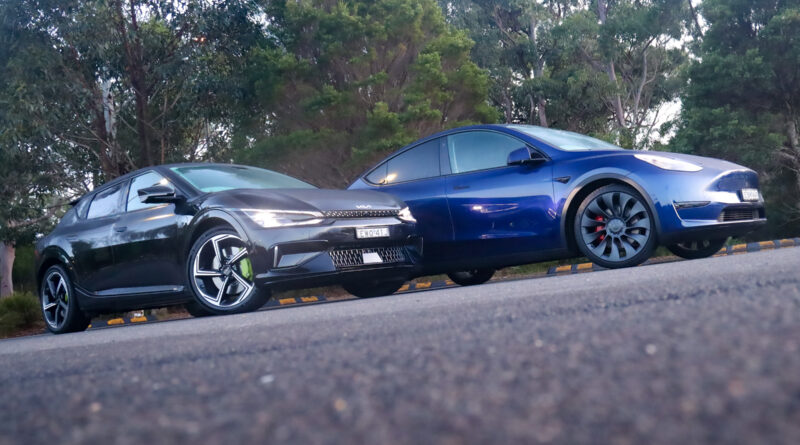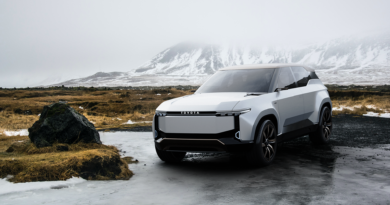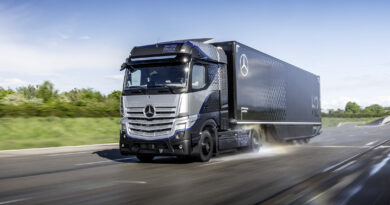Tesla Model Y Performance versus Kia EV6 GT: Which is Australia’s best go-fast EV?
They’re two of Australia’s most in-demand performance EVs — the Kia EV6 GT and Tesla Model Y Performance — and both will deliver all-electric thrills by the bucketload.
But which is the better buy?
Join us as we pit these two go-fast EVs against each other to see which finishes on top.
Which is the best value?
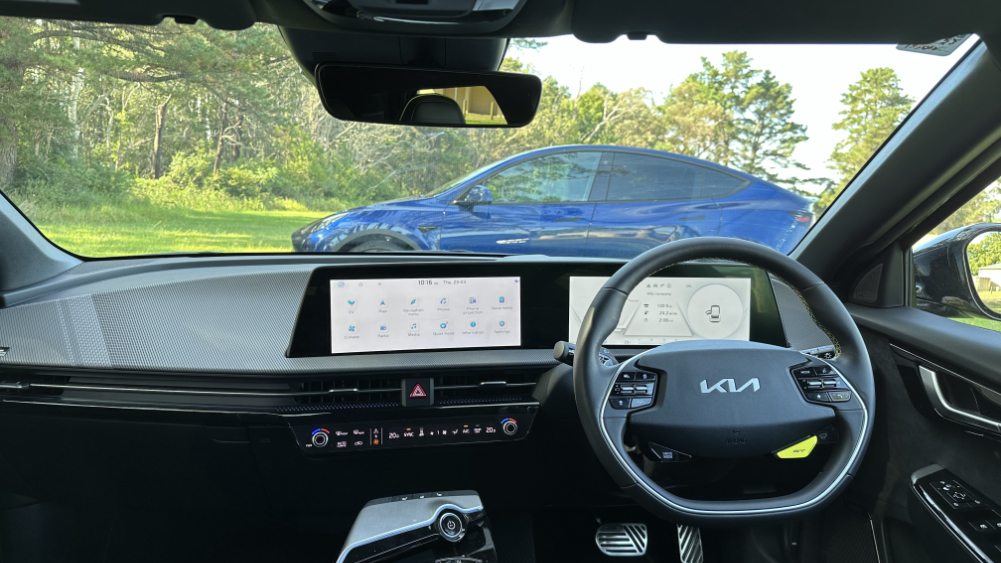
In the battle of the bucks the Tesla and Kia are pretty much neck and neck.
The Model Y Performance lists at about $99,000, before on-road costs. The Kia EV6 GT will set you back $99,590 plus on-road costs, just sneaking under the $100K barrier.
On this, then, the Tesla Model Y Performance finishes just ahead of the Kia, but that gap widens a little more when you consider what you actually get for that investment.
Not that the GT is poorly equipped. You’ll find 21-inch alloys, matrix LED headlights, faux-leather and suede sport seats that are heated up front, and a very good dual 12.3-inch digital instrument panel and touchscreen infotainment screen.
Its sports seats means it misses out on electric adjustment up front.
There’s Apple CarPlay and Android Auto, of course, as well as dual-zone climate, wireless phone charging and on-board nav, a powered boot and a 14-speaker Meridian surround sound system.
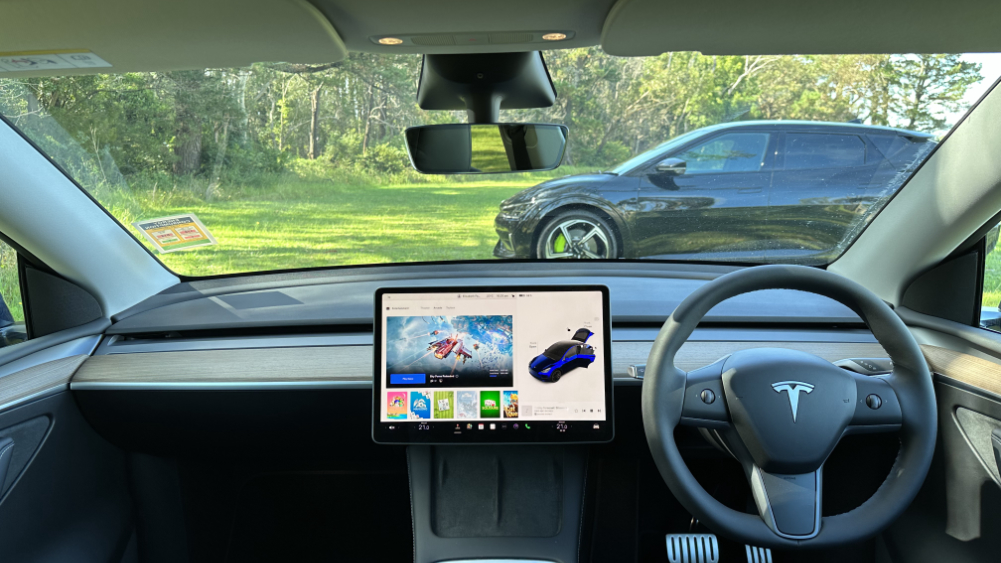
The MY Performance also rides on 21-inch wheels, delivers its own excellent (it’s better) 14-speaker stereo, has seat heating for both rows, and it has a big 15-inch portrait-style screen. It also gets power-adjustable front seats, a power adjustable steering wheel and a driver personalisation system that adjusts everything when you get inside.
The Tesla also allows you to use your phone as a key. It’s part of the advanced connectivity system that allows remote monitoring from an app (including real time camera vision to your phone) as well as adjustment of the ventilation and locking/unlocking.
So similar equipment – with extra ticks in the Tesla column – and a marginally lower sticker price? Throw in the ease of getting hold of the Tesla (there are queues for the EV6) and this one goes to the Model Y.
Which one looks better?
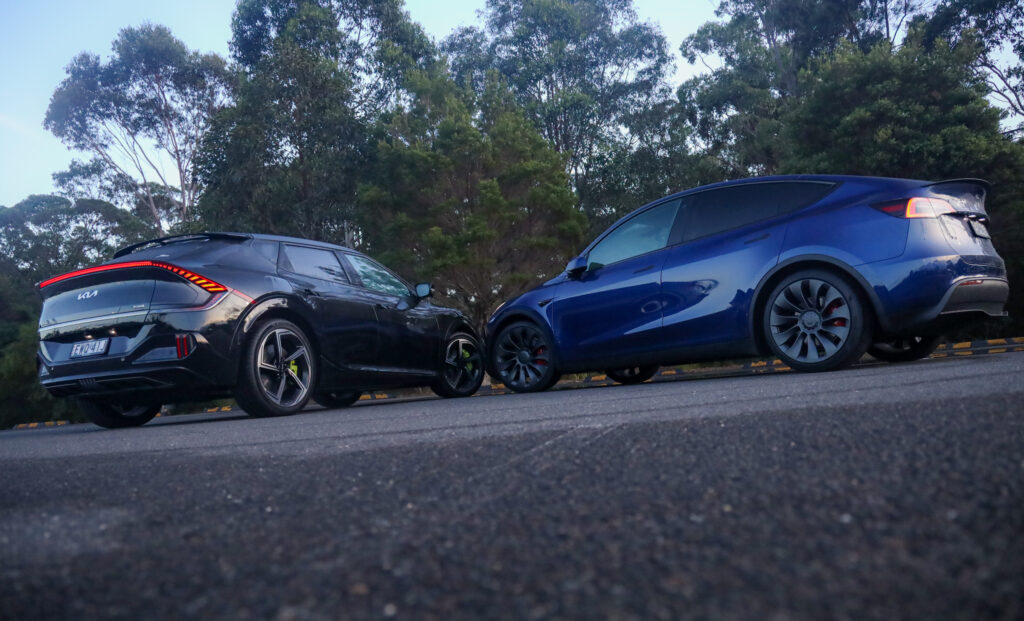
Do you like the look of the Model Y RWD? Then you’ll love the look of the Performance, which looks almost identical, inside and out.
Sure, there’s a tiny cabon-fibre lip spoiler at the rear, and alloy pedals in the cabin, as well as red brake calipers. It also sits a little lower, and gets bigger wheels, but that’s about it.
For mine, that’s the biggest drawback to the MY Performance. It’s a big financial jump between the RWD and Performance models, and I’d like it to look and feel a bit more special than it does.
That said, I’m not the biggest fan of the Model Y, looks wise, as it is. This is a vehicle built for practicality over street style, and it can look swollen and bulgy from some angles.
The Kia EV6 GT also borrows much from the lesser EV6 family, though the 21-inch wheels framing bright-yellow brake calipers, the unique lower bumper and the fancier headlights are easier to spot.
But here’s the rub: beauty is in the eye of the beholder, and in this beholder’s opinion, the EV6 GT is a better-looking car, inside and out. The big allow perched in each corner, the swept-back roofline, and the more shapely, stylish body work puts the EV6 GT on top in this category.
Which one makes the most power?
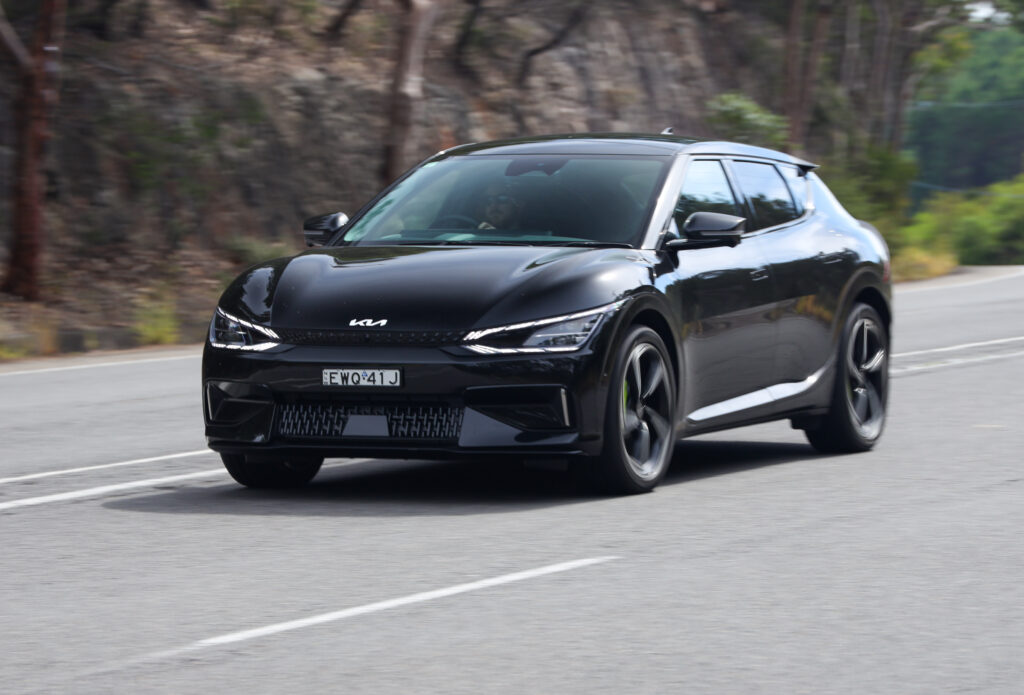
The Kia EV6 GT draws on twin electric motors producing a total 430kW and 740Nm, which is enough to deliver a claimed sprint to 100km/h in just 3.5 seconds. Extra performance kit here includes electronically controlled suspension and an electronically controlled limited slip differential (e-LSD).
The Tesla, on the other hand, is a little more mysterious. Tesla isn’t big on publishing power outputs, but we’ve turned to the EV Database, which claims 393kW and 660Nm. Tesla says that’s enough to deliver a 3.7s sprint to triple figures.
Our own Toby Hagon has crunched the data, and reports that the Performance is fitted with a front electric motor, code 3D3, which Tesla says makes 137kW and 219Nm. It also gets amore powerful rear motor, code 3D6, which produces a claimed 220kW and 440Nm.
You can’t just add those two numbers together, but it does suggest that the EV Database number is about right.
But what about real-world performance? We hooked both cars up to satellite-enabled testing equipment, on the same roads and in the same conditions, and found the EV6 GT can deliver a real-world sprint to 100km/h of 3.91 seconds. The Model Y was slightly slower, recording a 4.23-second run to triple digits.
| Kia EV6 GT | Tesla Model Y Performance | |
| 10km/h | 0.39 | 0.40 |
| 20km/h | 0.73 | 0.82 |
| 30km/h | 1.11 | 1.21 |
| 40km/h | 1.44 | 1.57 |
| 50km/h | 1.79 | 1.95 |
| 60km/h | 2.17 | 2.34 |
| 70km/h | 2.53 | 2.72 |
| 80km/h | 2.94 | 3.13 |
| 90km/h | 3.41 | 3.67 |
| 100km/h | 3.91 | 4.23 |
| 60-100km/h | 1.74 | 1.89 |
We’re scoring this one to the Kia EV6 GT.
Which one has the best battery and driving range?
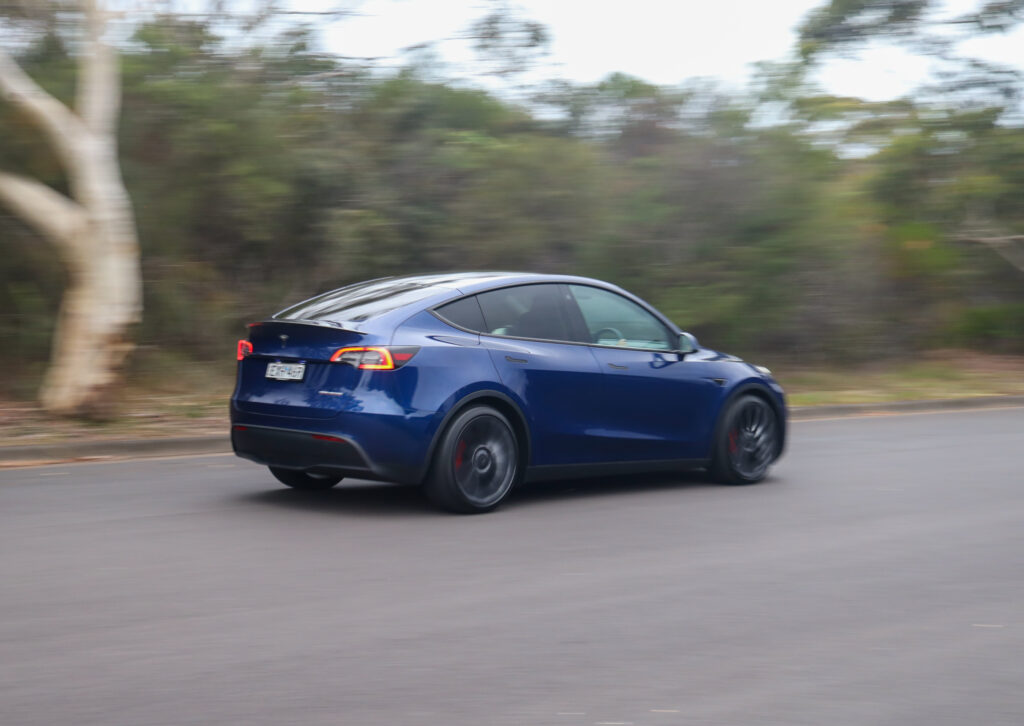
More Tesla digging required here, I’m afraid, as the brand doesn’t publish battery data. But we’ve done the digging, and the Model Y Performance’s lithium-ion battery is around 79kWh in size. Tesla says to expect a driving range of 514km on the WLTP cycle.
The Kia EV6 GT is equipped with a slightly smaller 77.4kWh, with a claimed WLTP driving range of 424km.
But as usual, the numbers don’t paint the full picture here. Over our 235km test route, the Tesla Model Y Performance used 44kWh of energy. The EV6 GT was hungrier, using more like 51kWh.
That means not only is the Model Y Performance fitted with a bigger battery, but it’s more efficient, too. And that means a win for the Tesla in this category.
Which one is more practical?

Spoiler alert: This one is going to the Tesla. While I’ve been critical of the Model Y’s looks, there is simply no denying that they serve an important purpose, and that is to maximise space for passengers and stuff.
That starts with the massive 854-litre boot (loaded to the roof), which – along with a genuinely useable frunk (front trunk) area and a backseat that feels massive for the segment – makes the Model Y the pick for families or those with lots of stuff or people to move.
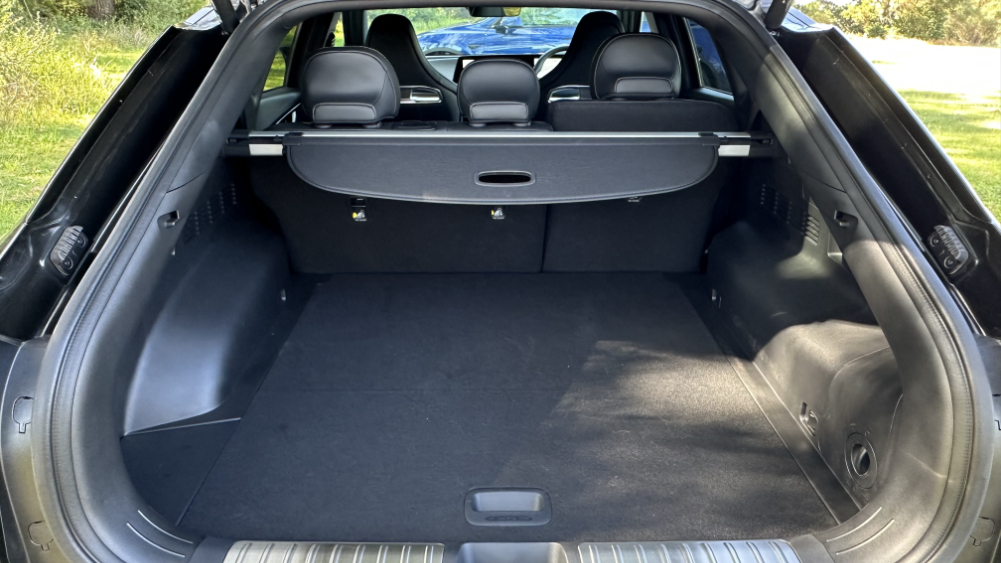
The Kia EV6, on the other hand, serves up a 480-litre boot space, which only feels underdone when compared to the Tesla. The frunk, however, is almost non-existent in dual-motor models, shrinking to just 20 litres.
Still, the almost large SUV dimensions of the Kia ensure plenty of room for passengers in both rows, but this one goes to the Tesla.
Which one drives better?

First things first, both these EVs are fast. And I mean, really fast. Really, push-your-head-back-in-your-seat fast.
Sure, the EV6 is slightly faster, but in real terms, you’re unlikely to notice. I did plenty of flat-footed runs in both, and the difference is negligible.
But where there is a gap, and a sizeable one, is in the way both cars attack a twisting road. These are performance cars, after all, so we’ll leave the boring bumper-to-bumper stuff for another review.
The short answer is the Kia EV6 GT shines on the right road, and just might be the most convincing electric sports car this side of a Porsche Taycan or Audi e-tron GT.
It’s both big and heavy, and yet somehow manages to feel neither when cornering. The power delivery is smooth, constant and ample, and the steering well-weighted and direct without venturing into too-sharp territory.
There’s no shortage of grip, either, with the EV6 GT willing to pick and stick to a cornering line, even as you apply more and more throttle.
It is a seriously convincing performance car, regardless of what’s powering it.
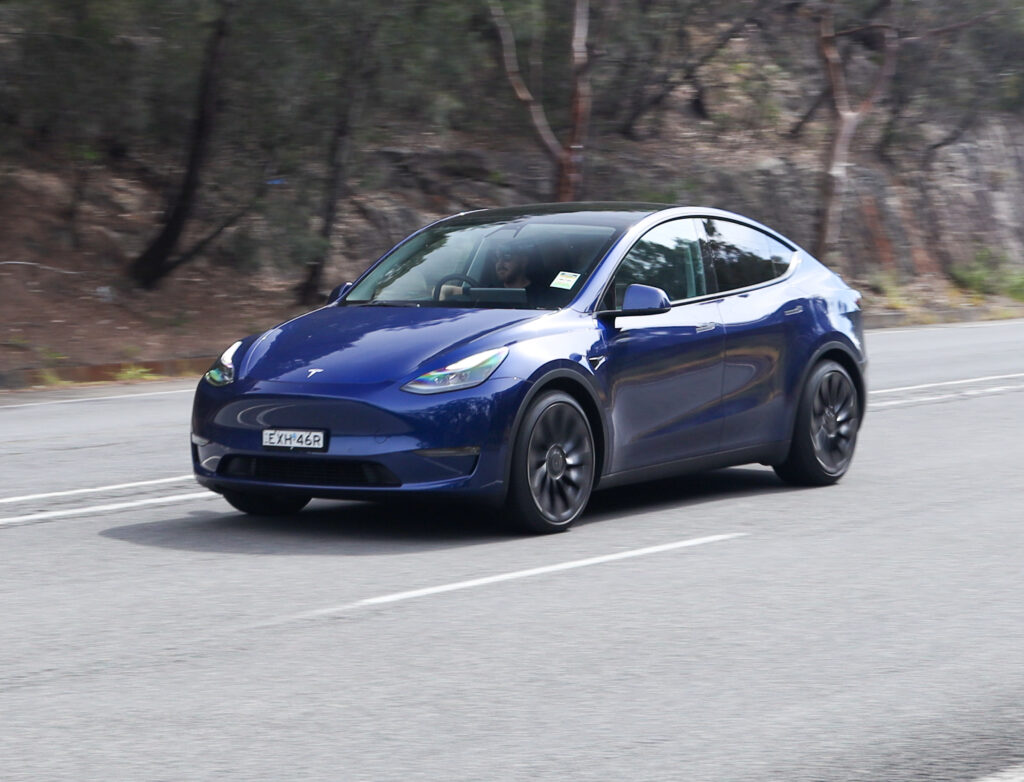
The Tesla Model Y Performance is also impressive, right across the board, just without some of the polish of its Korean rival.
The grip is staggering, with the upgraded Pirelli P Zero rubber sticking glue-like to the tarmac, allowing you to carry surprising speed through corners.
But the letdown here is too-sharp steering, and a general lack of cohesion when travelling at pace. The Model Y feels like you’re convincing it to do something it doesn’t necessarily want to do, while the Kia takes to corners like it was designed for it.
Score another to the EV6 GT.
And our winner is:
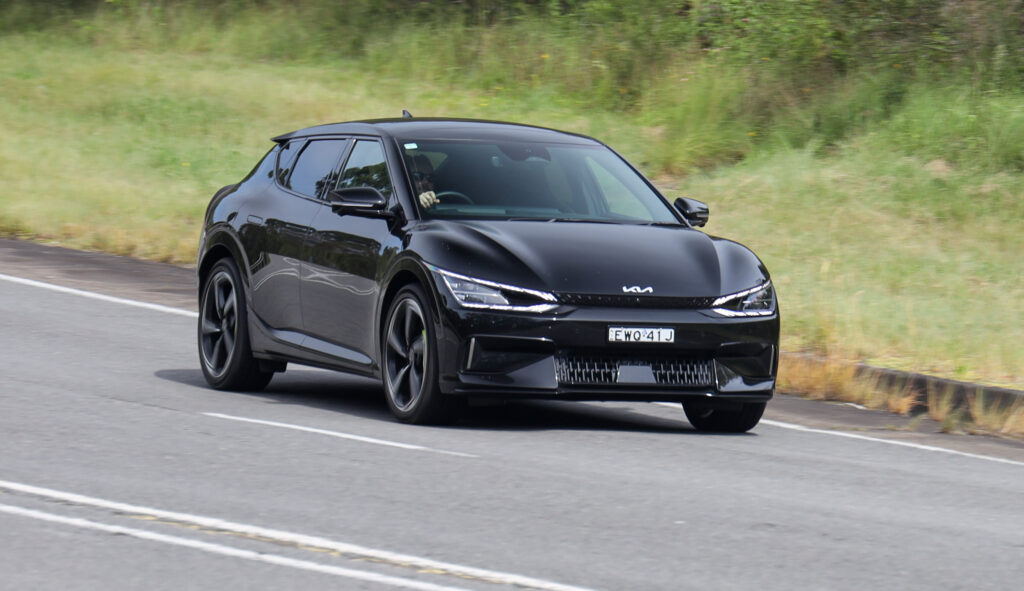
It has to be the Kia EV6 GT, in a points decision based on the simple fact that, as a performance car, it outshines the Tesla when it comes to cornering, dynamics and driving feel.
That’s not to say the Model Y Performance isn’t a seriously good machine, more that Tesla is asking you to pay a serious premium for the whole performance thing, and for mine, you’re better off investing in the cheaper RWD model for better bang for bucks.
Kia EV6 GT specifications
Price: $99,950 plus on-road costs
Basics: EV, 5 seats, 5 doors, large SUV, AWD
Range: 424km (WLTP)
Battery capacity: 77.4kWh
Battery warranty: 7 years/150,000km
Energy consumption: 20.6kWh/100km (WLTP)
Motors: 1 front (160kW/350Nm), 1 rear (270kW/390Nm), combined outputs 430kW/740Nm
AC charging: 10.5kW, Type 2 plug
DC charging: 230kW (approx), CCS Combo plug
0-100km/h: 3.91 seconds (tested)
Tesla Model Y Performance price and specifications
Price: About $106,000 drive-away
Basics: EV, 5 seats, 5 doors, SUV), AWD
Range: 514km (WLTP)
Battery capacity: 79kWh
Battery warranty: 8 years/192,000km
Energy consumption: 17.3kWh/100km (WLTP)
Motors: 1 front 137kW/219Nm and 1 rear 220kW/440Nm
AC charging: 11kW, Type 2 plug
DC charging: 250kW, CCS combo plug
0-100km/h: 4.23 seconds (tested)

